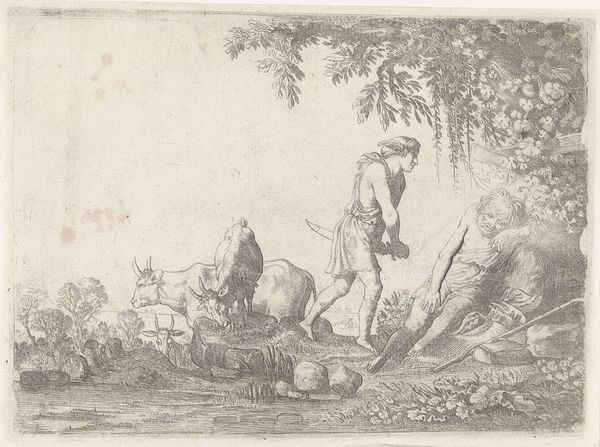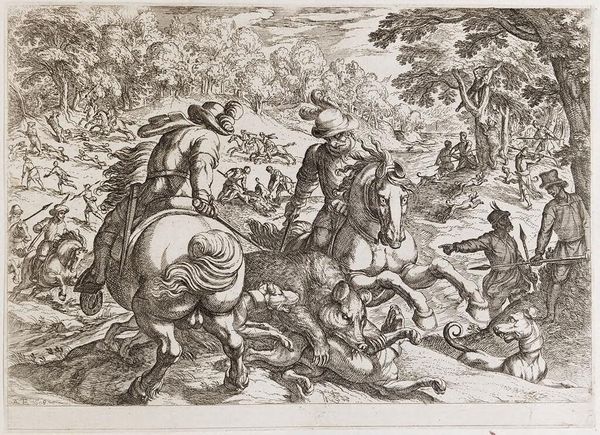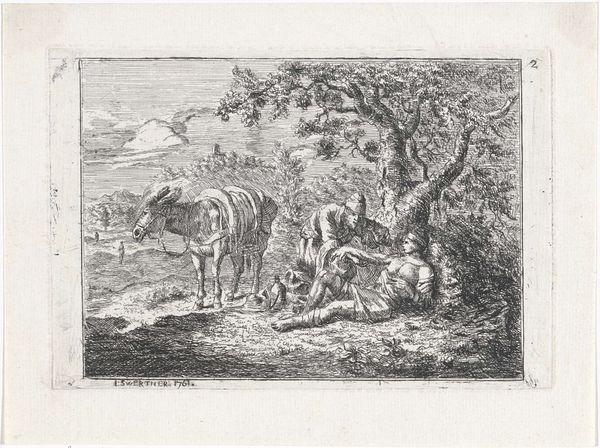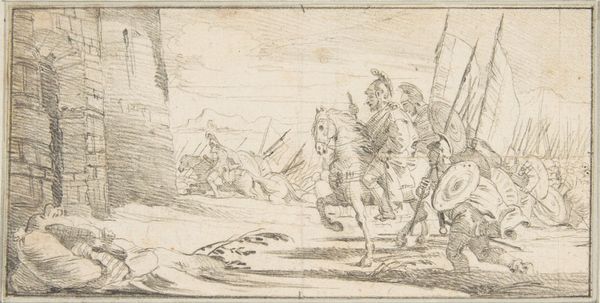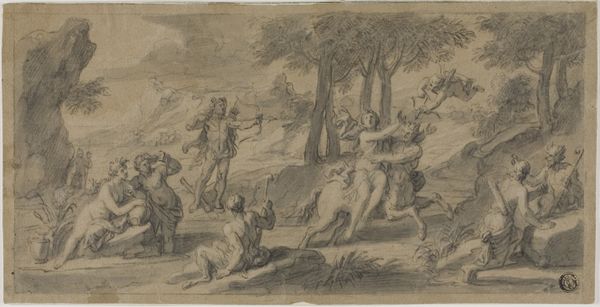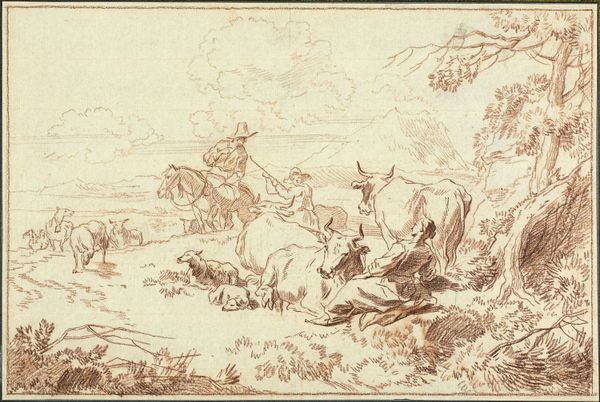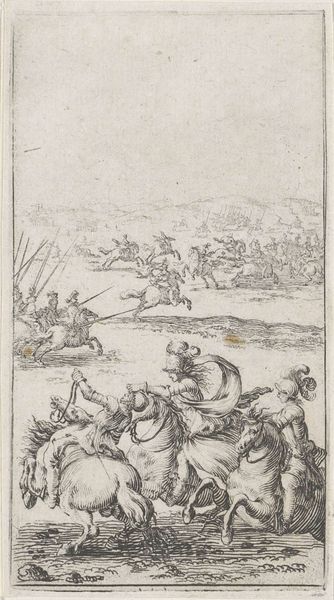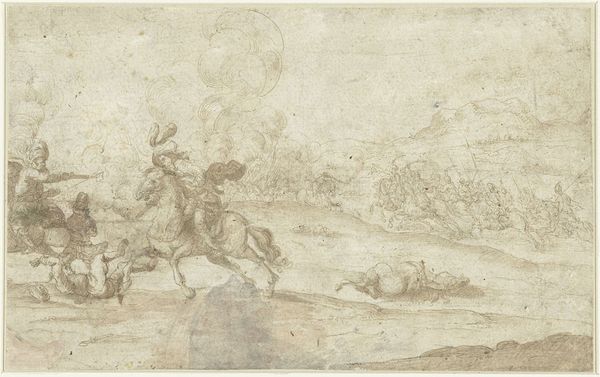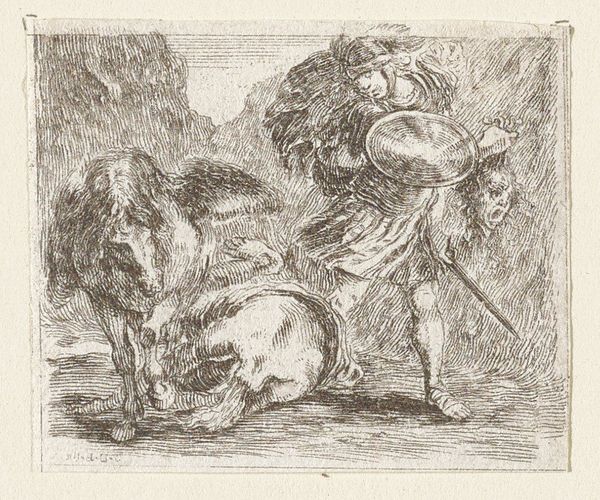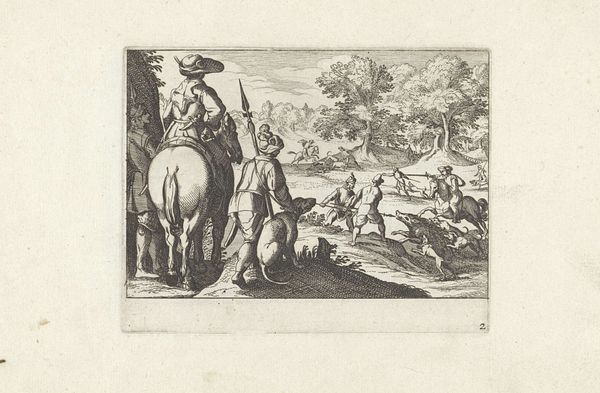
drawing, print, etching, engraving
#
drawing
#
narrative-art
#
baroque
# print
#
etching
#
landscape
#
figuration
#
history-painting
#
engraving
Dimensions: height 96 mm, width 133 mm
Copyright: Rijks Museum: Open Domain
Curator: Looking at this work, I’m immediately struck by a feeling of vulnerability amidst the sweeping landscape. The figures appear so fragile, almost ephemeral. Editor: Indeed. What we're seeing here is a print from between 1620 and 1664, housed at the Rijksmuseum. It depicts the "Journey of Jacob to Egypt," created using etching and engraving, media that allow for intricate detailing but also contribute to that sense of lightness. Curator: Lightness is the perfect word. The etching technique, particularly, creates a quality that enhances the delicate features and makes them look ghostly. How interesting that such an ostensibly triumphal narrative feels so tinged with transience. I'm particularly curious about the politics of migration inherent in the artwork itself. Editor: I agree completely. To me, the artist has captured the weight and precariousness of relocation, this family migration reads differently when placed against global narratives and the intersectionality of diaspora identities. Do you think that the use of animals – the mules, the cattle – speaks to a commodification of their assets? Curator: Certainly, this imagery is steeped in art historical depictions of family narratives and landscapes that are simultaneously familiar and strange. What really stands out for me is how this approach impacts our understanding of labor—human and animal—in service of family survival. And to have this within the "history-painting" genre allows the viewer to question just how much truth is contained in the dominant historical perspective. Editor: It prompts us to remember how history often favors particular narratives while obscuring other voices, like women, the lower classes, or even these traveling animals we see etched so intricately. In fact, they really feel like witnesses of the journey. Their gaze encourages us to reflect on our present situation in light of past struggles. Curator: I couldn’t agree more. Considering contemporary immigration politics, the image sparks powerful associations and helps bridge historical narratives with current events. It’s fascinating how a nearly 400 year-old print can still speak volumes about identity and displacement today. Editor: Well said. Looking at the composition now, I’m left feeling hopeful despite its undercurrent of fragility, I feel a sense of connection.
Comments
No comments
Be the first to comment and join the conversation on the ultimate creative platform.

